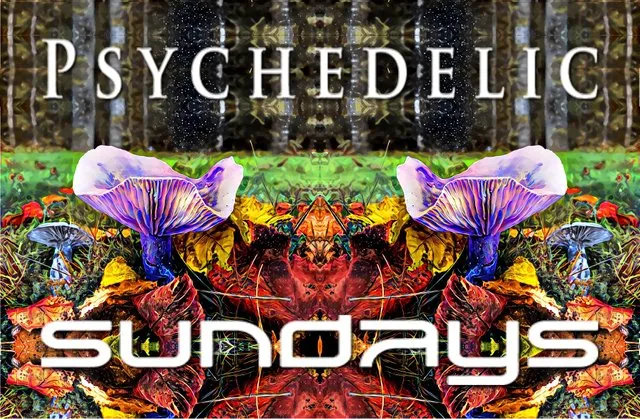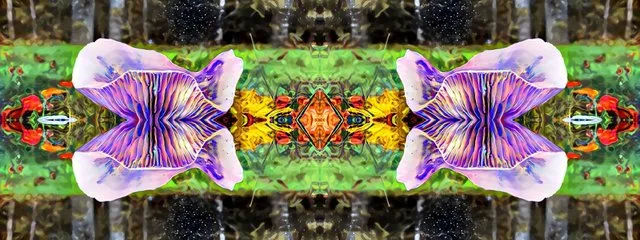
“The psychedelics are a powerful educational tool. They are the surest way to learn the arbitrariness of our ordinary perception. Many of us have had to use them to find out how little we knew.” ― Gregory Bateson
In this post, I will share with you some of what I found on my neverending journey through the psychedelic digital jungle of interesting articles, podcasts, and studies that I have found:
The Revolution Will Not Be Psychologized: Psychedelics’ Potential for Systemic Change
For many, our collective liberation will come on the heels of legal psychedelic psychotherapy in the United States, which will give record numbers of Americans the chance to experience MDMA and psilocybin. Excitement has built around the empirical finding5 that depressed patients who received two doses of psilocybin reported durable attitude shifts toward a greater sense of connectedness to nature and away from authoritarian ideals, like xenophobia and ironfisted leadership.
Considerations for Psychedelic Therapists when Working with Native American People and Communities
In the Western world, we separate everything into disciplines and silos history, medicine, philosophy, spirituality, and in most instances the connection between these disciplines is not so obvious or is non-existent (Beck, Walters, & Francisco, 1996). The mystical and sacred experiences of these disciplines are not included. We only view them from our rational linear perspectives. In the Diné culture, we taught that all things are connected and what affects one affects the other. For example, if we contaminated our water sources we will not only become ill but the animals and plants will also become ill. Another aspect of Diné culture is as human beings we cannot separate our physical, spiritual, mental, emotional bodies, and our environment from one another. My personal experience showed me that to heal from an illness, my physical, spiritual, mental, and emotional bodies had to be in harmony with the environment around me, as well. This healing was done through traditional ceremonies to achieve balance.

Bwiti Ritual Use of National Treasure Iboga
Tabernanthe Iboga, mostly known as “Iboga” or Ibogaine, is a perennial rainforest shrub, noticeably used in traditional African medicine and rituals. The yellow-colored bark is chewed, and produces hallucinations that have been recognized to be so intense, the outcomes have often been described as near-death experiences. Iboga may just becoming popular in the west, however it has long been used by the Bwiti in ceremonial practices.
Ayahuasca is Helping the Global North to Discover the Sacredness of Tobacco
Among the plants that go together with ayahuasca, tobacco is one of the most important, considered to be as sacred as ayahuasca. You can do a quick search on tobacco shamanism in the Americas that will persuade you about the sacredness of tobacco in some cultural contexts. In the north of the continent, tobacco was, and remains, central in the “talking circles” held by the Iroquoian Confederation (Von Gernet, 1992). In South America, tobacco is used in at least six different ways by Indigenous peoples: chewing or sucking, drinking, licking, snuffing, smoking, and by enema (Wilbert, 1987). The case of the Matsigenka people in Peru is widely known, where the local name of shamans is related to tobacco: seripigari means“the one who returns tobacco,” according to American ethnobotanist Glenn Shepard (1998), or the “the one intoxicated by tobacco,” according to Swiss anthropologist Gerhard Baer (Rosengren, 2002). For the Huitoto people of Colombia, boiled tobacco leaves are a medicine for skin infections; tobacco is a very central part of Huitoto oral accounts and cultural practices under the name of ambil (tobacco paste). Together with manioc and coca leaf, tobacco constitutes the trilogy of Huitoto sacred plants (Tagliani, 1992). In the oral history of this people, a cultural hero is able to fly using coca and tobacco leaves as feathers (Rangel, 2004), a clear reference to the shamanic flight induced by sacred plants.
‘Respondents reported the primary senses involved in the encounter were visual and extrasensory (e.g. telepathic). The most common descriptive labels for the entity [encounter] were: being, guide, spirit, alien, and helper. Although 41% of respondents reported fear during the encounter, the most prominent emotions both in the respondent and attributed to the entity were love, kindness, and joy. Most respondents endorsed that the entity had the attributes of being conscious, intelligent, and benevolent, existed in some real but different dimension of reality, and continued to exist after the encounter.’
Benefit Enhancement Strategies Correlated With Positive 5-MeO-DMT Experiences
While naturally-occurring 5-MeO-DMT can be found in many places, its highest concentration is found in the secreted venom of the Sonoran Desert Toad, known also as Bufo alvarius. Hence, it is commonly referred to as “Bufo,” or simply “the Toad.” While known to fill some folks with terror, 5-MeO-DMT opens countless others to an experience of cosmic bliss that can neither be described nor understood.
Ayahuasca Benefits: The Health and Healing Powers of This Plant Medicine
For thousands of years, indigenous people native to the Amazon have ingested a mystical and potent plant-based brew called ayahuasca. Often sipped during carefully curated ceremonies hosted by a plant medicine facilitator or shaman, ayahuasca’s effects are often intertwined with immense healing and profound spirituality. Although the origin story of ayahuasca has been befuddled by the passage of time and lack of archaeological evidence, the various traditional shamanistic rituals that guide the usage of this plant-based brew remain not only important—but necessary—to the experience.
Can Indigenous and Decrim Perspectives Align on Peyote?
“I’m a peyote researcher and also a peyotist,” she says, referring to the intertribal Native American religious practice in which congregants use peyote as a sacrament. “I have two primary medicines: water is first and peyote is second. It’s not just a medicine to me, but is also my relative, my ancestor. When I was a young girl taking medicine, the plants I was ingesting were plants much older than myself. That relationship is very important.”

PSYJuly | Day 6 – Top Integration Tips for Psychedelic First Timers
There was a great thread which covered many areas important to integration and included: self care, quality rest, community, selective sharing, facing what came up, avoiding distractions, remembering your why, and setting intentions.
“This is a major step forward for mental health in Canada and around the world,” said Gertner. “Psilocybin is proven to have real benefits for treating serious conditions that affect millions of people, and we are excited to be on the cutting edge of helping people improve their lives and making the world a better place, which I am passionate about and have spent the majority of my life pursuing.”
Researcher Charles Nichols Studies the Impact of Psychedelic Substances on Inflammation
Charles Nichols, a professor of pharmacology of the Louisiana State University Health Sciences Center, is examining how the substituted amphetamine 2,5-Dimethoxy-4-iodoamphetamine, also known as DOI, affects immune function.
DC Activists Submit Signatures To Put Psychedelics Decriminalization On November Ballot
Organizers have been scrambling for weeks to collect enough signatures from D.C. voters by Monday’s deadline amid historically difficult circumstances: a global pandemic, months of stay-at-home orders and protests over racism and police violence that filled the streets of the nation’s capital. But with the help of innovative signature-gathering techniques and allies flown in from across the country, advocates said they had successfully submitted upwards of 35,000 signatures—more than enough to qualify the initiative.

Why are people turning to cocaine and ketamine to self-medicate their mental illness?
According to the National Survey on Drug Use and Health (NSDUH), 45% of people who struggle with addiction also have a mental illness, with substance abuse most often co-occurring with depression, OCD, anxiety disorders, PTSD, and psychosis.
SoCal Brain Health Clinic Introduces Mindfulness-Based Ketamine Program
TMS & Brain Health is introducing a new ketamine program as part of their suite of mental health services. The new program will be offered at the organization’s Santa Monica location. Ketamine has historically been used as an anesthetic for surgeries. However, in recent years, the medication has come to the forefront as an effective method for treating severe depression through ketamine infusion therapy. TMS & Brain Health is proud of its ketamine infusion program as an alternative to traditional antidepressant medications, which feature many drawbacks that patients with depression may find unfavorable. Some in the medical industry have referred to ketamine as a major new player in efforts to treat depression and prevent suicide.